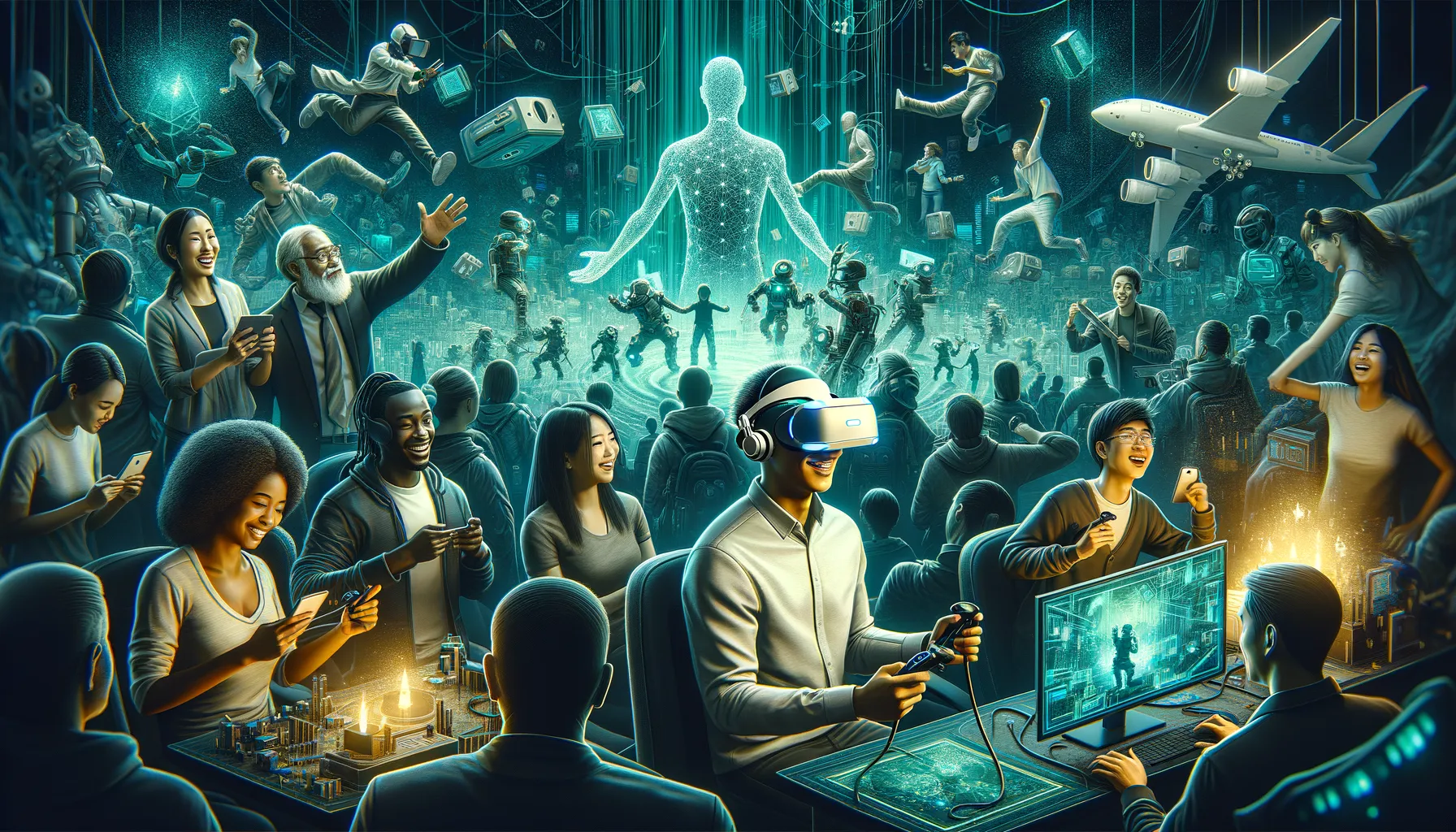Thursday 24 April 2025, 03:31 PM
Exploring the latest innovations in VR technology
VR innovations like standalone headsets, better visuals, haptics, eye-tracking, AI, and social platforms are making VR more immersive, accessible, and part of daily life.
Introduction
Hey there! If you've been tuning into the tech world lately, you've probably noticed that virtual reality (VR) is no longer just a buzzword—it's becoming a significant part of our daily lives. From gaming and entertainment to education and healthcare, VR technology is evolving at a breakneck pace. Let's take a casual stroll through some of the latest innovations in VR that are shaking things up. Grab your virtual backpack, and let's dive in!
The rise of standalone VR headsets
Remember the days when VR headsets required a high-end PC and a web of cables that could trip a ninja? Well, those days are fading fast. Standalone VR headsets are stepping into the spotlight, offering immersive experiences without the tether. Devices like the Oculus Quest 2 have made VR more accessible and portable. No more worrying about tripping over cords or setting up complicated hardware—just put on your headset and you're good to go. It's VR on your terms, anywhere you want.
Improved visuals with higher resolutions
One of the early gripes with VR was the "screen-door effect," where you could see individual pixels, making the virtual world look like it was behind a mesh screen. Not exactly immersive, right? Thankfully, headset manufacturers are upping their game with higher resolution displays. The HP Reverb G2, for instance, boasts one of the highest resolutions on the market, delivering crisp and detailed visuals. This means scenes are more lifelike, texts are readable, and your eyes thank you for the reduced strain.
Higher refresh rates for smoother experiences
If you've ever felt a bit queasy after a VR session, low refresh rates might be the culprit. Modern headsets are now pushing refresh rates up to 120Hz and beyond. Take the Valve Index, for example—it offers refresh rates up to 144Hz. Higher refresh rates translate to smoother motion and less motion sickness. It's like upgrading from a bumpy wagon ride to cruising on a smooth highway.
Advancements in haptic feedback
Touch adds a whole new layer to immersion. Haptic feedback technology is evolving, allowing users to "feel" the virtual environment. Companies like HaptX are developing gloves that provide realistic touch sensations. Imagine reaching out to pet a virtual dog and actually feeling its fur, or handling virtual tools with tactile feedback. Haptic suits are also on the horizon, promising a full-body sensory experience. It's like wrapping yourself in the virtual world—literally.
Eye-tracking technology
Eyes are the windows to the soul—and now, to enhanced VR experiences. Eye-tracking technology is becoming a staple in newer headsets. By knowing where you're looking, VR systems can adjust the focus and depth of field in real-time, making scenes more realistic. It also enables foveated rendering, where the system renders the highest quality images where your eyes are focused, optimizing performance and reducing the load on the hardware. Plus, it opens up new ways to interact—imagine selecting menu options just by looking at them.
Inside-out tracking
Gone are the days when you had to set up external sensors around your room. Inside-out tracking uses cameras and sensors built into the headset to track your movement. This innovation simplifies setup and makes VR more accessible to the average user. The Oculus Quest series and Microsoft's Windows Mixed Reality headsets are prime examples. It's plug-and-play VR that's as easy as slipping on a pair of goggles.
Wireless adapters and solutions
For those who still prefer the power of PC-based VR but hate the cables, wireless adapters are a game-changer. The HTC Vive Wireless Adapter frees users from the tether, allowing for unrestricted movement without sacrificing performance. Wireless solutions use high-frequency bands to transmit data with minimal latency. It's the best of both worlds—high-end VR experiences with the freedom to move.
The integration of AI and VR
Artificial intelligence is making VR smarter. AI algorithms can create more realistic and responsive virtual environments. For instance, in VR games, AI-powered characters can interact with you in more natural ways, adapting their behavior based on your actions. In social VR platforms, AI can help moderate content and interactions to foster safer communities. Plus, AI can assist in generating virtual worlds procedurally, meaning more diverse and expansive environments without astronomical development costs.
VR in social interaction and collaboration
Speaking of social VR, platforms like VRChat and AltspaceVR are revolutionizing how we connect. You can attend virtual concerts, hang out with friends, or meet new people from around the world—all from your living room. With the global shift towards remote work, VR is also making strides in professional collaboration. Imagine attending a virtual meeting where you can share 3D models, brainstorm on a virtual whiteboard, or simply feel more present with your colleagues. It's not just a video call; it's a shared space.
Expanded use in education and training
VR is proving to be a powerful tool for learning. Schools and universities are incorporating VR to create immersive educational experiences. Students can explore historical sites, dive into the human bloodstream, or conduct virtual science experiments without the safety risks. In professional training, VR is used for simulating real-world scenarios. Pilots, surgeons, and engineers can practice in a controlled, virtual environment, gaining valuable experience without real-world consequences.
Enhanced audio technology
Immersion isn't just about visuals. Spatial audio technology is enhancing the auditory experience in VR. With 3D audio, sounds come from the correct direction and distance, just like in the real world. Turn your head, and the sound adjusts accordingly. This makes environments feel more real and can even provide gameplay cues in VR games. Companies like Ossic are working on headsets that adapt audio based on your unique ear shape, further personalizing the experience.
Accessibility improvements
Inclusivity is getting attention in the VR space. Developers are focusing on making VR accessible to people with disabilities. This includes adjustable interfaces, alternative input methods, and features like closed captioning in VR content. By designing with accessibility in mind, VR can be enjoyed by a broader audience. After all, the virtual world should be open to everyone.
The fusion of VR and AR
Virtual reality and augmented reality (AR) are starting to blend into mixed reality (MR). Devices like the Microsoft HoloLens 2 overlay virtual objects onto the real world, allowing for interactive experiences that combine the best of both worlds. Imagine walking through your home and seeing virtual furniture placed in real space or collaborating with a colleague who appears as a hologram in your office. The lines between virtual and reality are becoming increasingly blurred—in a good way.
Health and wellness applications
VR isn't just for fun and games; it's also making an impact on health and wellness. Therapists use VR to treat phobias and PTSD by exposing patients to controlled virtual environments. Fitness apps in VR turn workouts into fun activities, like boxing or dancing, that keep you moving without feeling like a chore. Meditation and mindfulness apps provide serene virtual spaces to relax and de-stress. It's technology contributing positively to mental and physical health.
Challenges and future prospects
While all these innovations are exciting, VR still faces challenges. Issues like motion sickness, high costs for high-end systems, and the need for more killer apps are hurdles to widespread adoption. Battery life for wireless headsets and data privacy concerns with eye-tracking and biometrics are also areas that need attention. However, the industry is actively working on solutions, and the future looks bright. As technology advances and becomes more affordable, VR is poised to become an integral part of our daily lives.
Wrapping up
We’ve come a long way from the clunky VR systems of the past. The latest innovations are making virtual reality more immersive, accessible, and versatile than ever before. Whether you're a gamer looking to step into new worlds, a professional seeking better collaboration tools, or just someone curious about the possibilities, there's something in the VR space for you. It's an exciting time to watch this technology evolve, and who knows—maybe soon, we'll all be meeting up in a virtual café to chat about the next big thing. Until then, keep exploring, and see you in the virtual realm!

